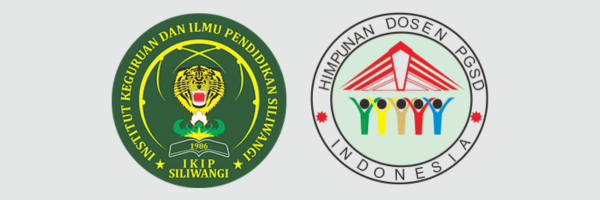A Study on the Effectiveness of Group Counseling Services in Fostering Critical Thinking Skills in Primary Education
English
Keywords:
Group Guidance Services , Critical Thinking SkillsAbstract
This study evaluates the effectiveness of group guidance services, such as group discussions, role-playing, and brainstorming, in improving critical thinking skills among elementary school students aged 8 to 12. Using a mixed-methods approach with a quasi-experimental design, the research divides participants into an experimental group, which receives group guidance, and a control group, which follows the regular curriculum. Quantitative data was collected using the Cornell Critical Thinking Test (CCTT), while qualitative insights were gathered through semi-structured interviews with students and teachers. Paired-sample and independent-sample t-tests were used for quantitative analysis, and a thematic analysis was applied to the qualitative data. The findings show a significant improvement in critical thinking abilities within the experimental group. This was supported by qualitative data, which indicated increased participation and a more positive attitude toward critical thinking among the students. The study concludes that group guidance services are highly effective in fostering critical thinking skills, provided they are well-planned and executed. Key factors for success include stakeholder cooperation, resource availability, and teacher expertise. The research offers practical recommendations for educators and school counselors to enhance and sustain these services, ensuring they continue to cultivate critical thinking skills essential for both academic and personal growth.
References
American School Counselor Association (ASCA). (2019). The ASCA national model: A framework for school counseling programs (4th ed.). Author.
Braun, V., & Clarke, V. (2006). Using thematic analysis in psychology. Qualitative Research in Psychology, 3(2), 77–101. https://doi.org/10.1191/1478088706qp063oa
Bruner, J. (1983). Child’s talk: Learning to use language. Oxford University Press.
Brown, A., Green, T., & Jones, L. (2019). Collaborative brainstorming in educational settings. Journal of Creative Education, 10(3), 45–58. https://doi.org/10.4236/ce.2019.103045
Cohen, J. (1988). Statistical power analysis for the behavioral sciences (2nd ed.). Lawrence Erlbaum Associates.
Corey, G. (2015). Theory and practice of group counseling (9th ed.). Brooks/Cole.
Creswell, J. W., & Creswell, J. D. (2018). Research design: Qualitative, quantitative, and mixed methods approaches (5th ed.). Sage.
Ennis, R. H., Millman, J., & Tomko, T. N. (2005). Cornell critical thinking tests level X & level Z manual. Critical Thinking Company.
Facione, P. A. (2011). Critical thinking: What it is and why it counts. Insight Assessment. Field, A. (2018). Discovering statistics using IBM SPSS statistics (5th ed.). Sage.
Ghanizadeh, A. (2017). The interplay between reflective thinking, critical thinking, self- monitoring, and academic achievement in higher education. Higher Education, 74(1), 101–114. https://doi.org/10.1007/s10734-016-0038-2
Gladding, S. T. (2016). Group work: A counseling specialty (7th ed.). Pearson.
Gysbers, N. C., & Henderson, P. (2012). Developing and managing your school guidance and counseling program (5th ed.). American Counseling Association.
Harris, R., & Nguyen, T. (2022). Constructivist approaches to critical thinking in group settings. Educational Psychology Review, 34(2), 123–140. https://doi.org/10.1007/s10648-021-09614-5
Hutchins, E. (2014). The cultural ecosystem of human cognition. Philosophical Psychology, 27(1), 34–49. https://doi.org/10.1080/09515089.2013.830548
Johnson, D. W., & Johnson, R. T. (1999). Learning together, working together: Cooperative, competitive, and individualistic learning. Allyn & Bacon.
Johnson, K., & Smith, P. (2020). The role of role-playing in critical thinking development. Journal of Experiential Learning, 15(4), 89–102. https://doi.org/10.1177/1053825920913294
Lee, S., & Carter, M. (2021). Enhancing critical thinking through group discussions. Teaching and Learning in Higher Education, 29(1), 67–82.
Martinez, R., & Thompson, E. (2018). Social dynamics and critical thinking in group settings. Group Dynamics: Theory, Research, and Practice, 22(3), 210–225. https://doi.org/10.1037/gdn0000082
Merriam, S. B., & Tisdell, E. J. (2016). Qualitative research: A guide to design and implementation (4th ed.). Jossey-Bass.
Mercer, N., & Howe, C. (2012). Explaining the dialogic processes of teaching and learning: The value and potential of sociocultural theory. Learning, Culture and Social Interaction, 1(1), 12–21. https://doi.org/10.1016/j.lcsi.2012.03.001
Parker, S., Collins, H., & Evans, J. (2020). Facilitation strategies for effective group learning. Journal of Group Counseling, 25(2), 156–170.
Paul, R., & Elder, L. (2006). Critical thinking: The nature of critical and creative thought. Journal of Developmental Education, 30(2), 34–35.
Van de Pol, J., Volman, M., & Beishuizen, J. (2010). Scaffolding in teacher-student interaction: A decade of research. Educational Psychology Review, 22(3), 271–296. https://doi.org/10.1007/s10648-010-9127-6
Vygotsky, L. S. (1978). Mind in society: The development of higher psychological processes. Harvard University Press.
Whiston, S. C. (2011). Principles and applications of assessment in counseling (4th ed.). Brooks/Cole.
Whiston, S. C., & Quinby, R. F. (2009). Review of school counseling outcome research. Psychology in the Schools, 46(3), 267–272. https://doi.org/10.1002/pits.20372
Wood, D., Bruner, J. S., & Ross, G. (1976). The role of tutoring in problem solving. Journal of Child Psychology and Psychiatry, 17(2), 89–100.
Yalom, I. D., & Leszcz, M. (2020). The theory and practice of group psychotherapy (6th ed.). Basic Books.
Downloads
Published
Issue
Section
License

This work is licensed under a Creative Commons Attribution-ShareAlike 4.0 International License.
The author is responsible for acquiring the permission(s) to reproduce any copyrighted figures, tables, data, or text that are being used in the submitted paper. Authors should note that text quotations of more than 250 words from a published or copyrighted work will require grant of permission from the original publisher to reprint. The written permission letter(s) must be submitted together with the manuscript.











